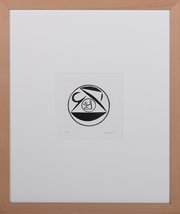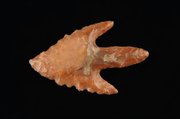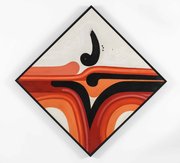
Textile
Museum of Islamic Art
- Title:
- Textile
- Production place:
- India
- Date:
- 1200 - 1499
- Period:
- 13th century CE
- Title:
- Textile
- Production place:
- India
- Date:
- 1200 - 1499
- Period:
- 13th century CE
- Material:
- Silk
- Technique:
- Weaving
- Dimensions:
- 80 × 25
With its striking pattern of interlocking parakeets arranged in horizontal rows, this silk samite fragment is a true masterclass in minimalistic design. Attributed to a South Asian weaving workshop active during the Delhi Sultanate period, it has been carbon-14-dated to the 13th-15th century CEl. Our knowledge of textile production in South Asia before the Moghul era is rather poor and the paucity of material evidence from this period has forced scholars to search for comparisons in other media. Thus, in recent years, interesting parallels have been drawn between the pattern and colour scheme of this textile fragment and the thirteenth-century roof paintings found in the Buddhist temple complex of Alchi (in Ladakh, Western Himalaya) and in ceiling painted decoration from other Buddhist complex of the Trans-Himalayan region. Interstingly, similar patterns of interlocking birds appear as well on ninth-century Chinese ceramics made for export, known as Yue wares, among the findings of the Belitung and Cirebon shipwrecks (in North Java, Indonesia). The appearance of this decorative motif on much earlier objects might place its origins in Eastern Asia and the active and far-reaching land and maritime trade across Asia might have prompted its wide circulation across Asia.



